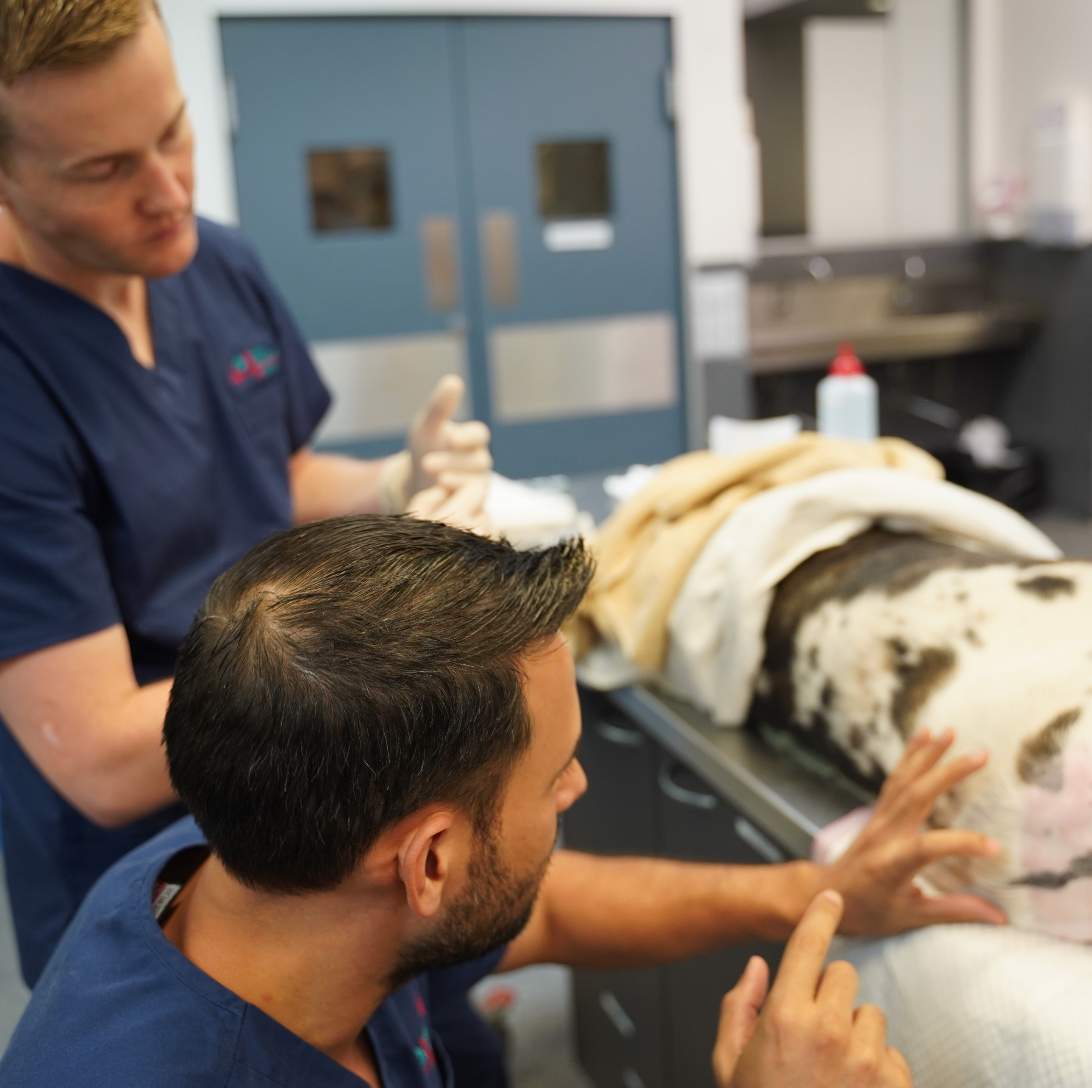I remember my first CSF tap; my hands were shaking – not ideal when you are advancing a needle towards the spinal cord.
If you go a couple of millimetres too far, the needle goes into the spinal cord and it could cause the patient to go into respiratory arrest.
Some things I am happy to try on my own after researching, but this was not one of them.
Subjective versus objective
I remember being told you should feel a “pop” when you are entering the right place, but what does feeling a “pop” actually feel like or mean? This subjectiveness is what made CSF taps so stressful for me.
The advantage I had was that my mentor was there, and removed the subjective “pop” and replaced it with an objective “see fluid”. My mentor knew the risks, but understood the importance of emergency vets knowing how to do CSF taps, as an early diagnosis of meningitis can save a patient’s life.
Mentor’s method
What my mentor did was create a way of teaching CSF taps that minimised risks – by teaching to look to see if you actually “see fluid”.
He said to advance the needle 1mm at a time, then stop and look down the hub and the barrel of the needle, and check for CSF. If you’re in the right spot it comes out within a second or two.
This method may take longer, as you are advancing the needle much more slowly, but it makes the whole process safer as you could objectively know when you are in the right spot.
Experience
If you are a mentor, then you are very experienced. However, it is this experience that means we can lose perspective and forget how difficult some of the things we do actually are.
So, if you are faced with a situation where you have to teach a mentee something with high risks, rather than avoiding teaching it and doing it yourself all the time, consider ways of reducing the risks while teaching it, or teach it in a way that has additional steps that are more objective and make it safer for first-timers.
What high-risk procedure or task have you been taught to perform by a good mentor?

Leave a Reply